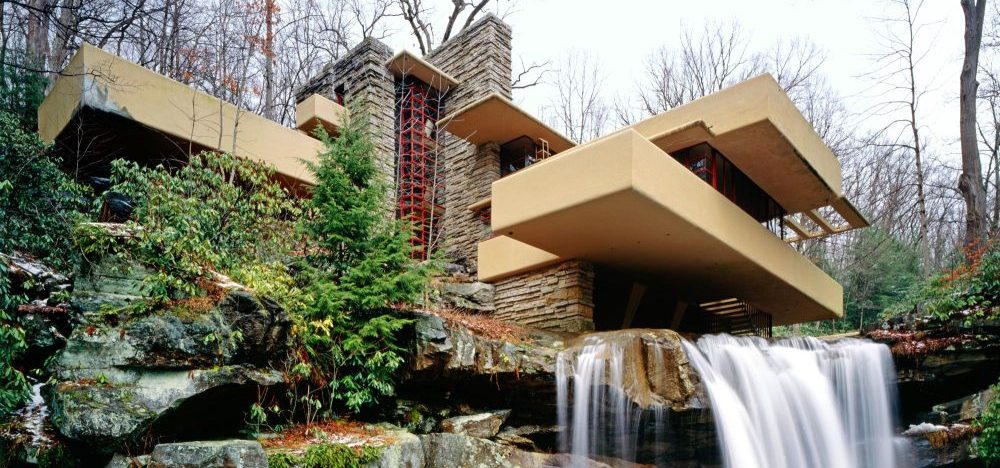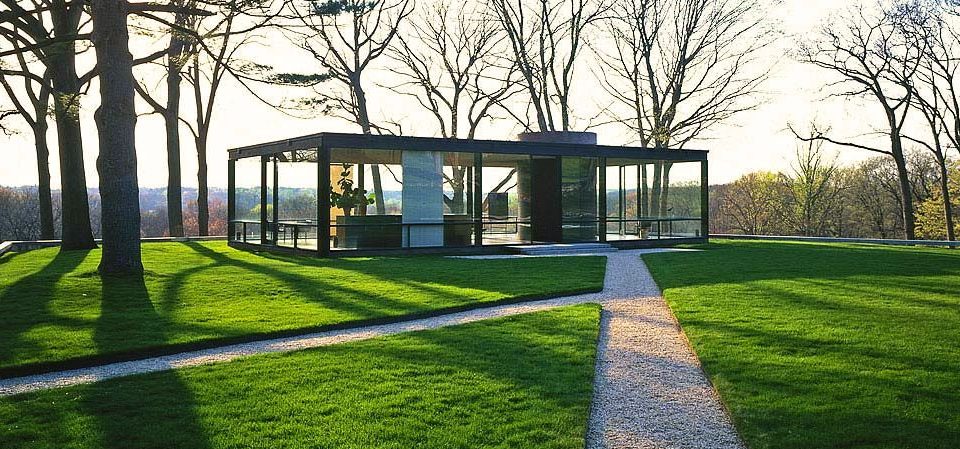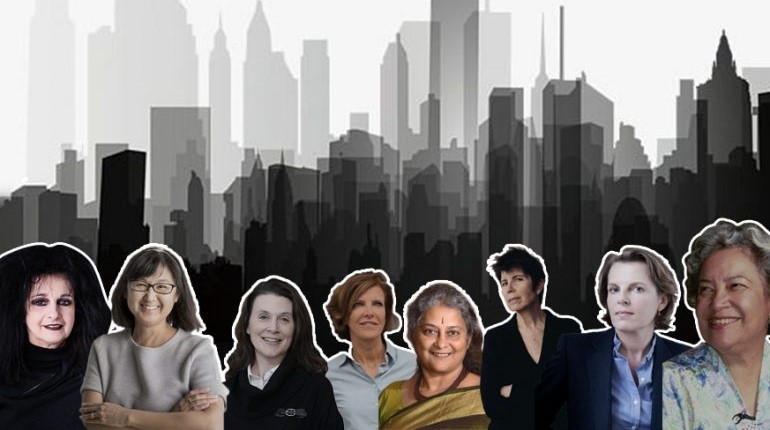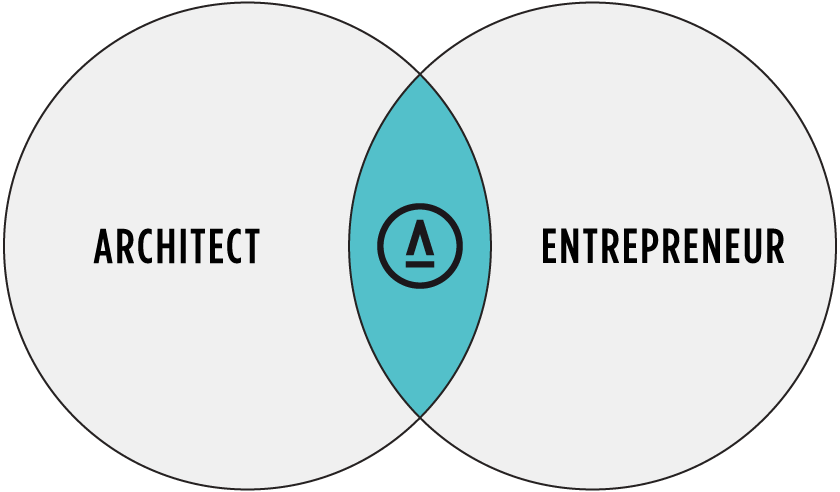Tag archives for: architecture

As artificial intelligence in architecture continues to make waves in the design and construction industries, architecture firms harness AI to enhance creativity, sustainability, and efficiency in building design. The rise of AI generative design and computational design in architecture allows firms to create innovative structures that are both beautiful and highly functional. In this blog, we explore the top firms at the forefront of AI-driven architecture and sustainability, shaping the future of the built environment.
1. Zaha Hadid Architects: Pioneers in AI-Driven Design
Zaha Hadid Architects (ZHA) has been a leader in integrating artificial intelligence into architecture to push the boundaries of traditional design. Using AI generative design, ZHA can create complex, organic forms that defy conventional architectural practices. By utilizing computational design in architecture, the firm can optimize the aesthetics and performance of its structures, making it an industry trailblazer in employing AI to create groundbreaking architecture.
2. Bjarke Ingels Group (BIG): AI and Urban Design Innovation
Bjarke Ingels Group (BIG) has embraced AI and parametric design to revolutionize urban planning and building design. The firm employs machine learning in urban planning to optimize its projects’ energy efficiency and sustainability. BIG’s commitment to AI-driven architecture and sustainability ensures that its designs are visually striking and environmentally responsible, leading toward more sustainable and intelligent cities.
3. Foster + Partners: Integrating AI for Smart Buildings
Foster + Partners is at the cutting edge of AI-driven architecture and sustainability. The firm uses AI to optimize energy efficiency and integrate innovative technologies into its designs. Incorporating artificial intelligence into architecture creates buildings that are adaptive to changing environmental conditions, ensuring long-term sustainability and performance. Its focus on sustainable AI architecture helps pave the way for more resilient and energy-efficient buildings in the future.
4. AI SpaceFactory: AI and 3D Printing for Future Architecture
AI SpaceFactory is responsible for combining AI generative design with 3D printing technologies to create innovative and sustainable architectural solutions. Their work, which includes designing habitats for Mars, demonstrates the potential for AI-driven architecture on Earth and beyond our planet. By focusing on sustainable materials and efficient design, they create architecture that minimizes waste, making them a key player in sustainable AI architecture.
5. Kohn Pedersen Fox (KPF): Data-Driven AI for Sustainable Architecture
Kohn Pedersen Fox (KPF) leverages machine learning in urban planning to analyze large datasets and optimize the design and performance of buildings. Their integration of AI-driven architecture and sustainability helps them create more intelligent and efficient cities. KPF uses AI to assess the environmental impact of its buildings, reduce energy consumption, enhance sustainability, and position itself as a leader in sustainable AI architecture.
6. Gensler: Leveraging AI to Design Smarter Spaces
Gensler uses artificial intelligence in architecture to design more innovative and flexible spaces. By incorporating AI tools, they analyze patterns in user behavior to create adaptable workspaces, commercial environments, and urban spaces. Their emphasis on AI-driven architecture and sustainability ensures that these spaces are functional and environmentally responsible, making Gensler stand out in sustainable AI architecture.
7. Morphosis Architects: AI and Environmental Performance
Morphosis Architects combines computational design in architecture with AI to create high-performance buildings. The firm uses AI to visualize complex geometries and analyze environmental data, optimizing energy use and sustainability. Their focus on AI-driven architecture and sustainability enables them to design innovative buildings that perform efficiently, with a minimal ecological impact, pushing the boundaries of sustainable AI architecture.
8. Skidmore, Owings & Merrill (SOM): AI for Optimizing Building Performance
Skidmore, Owings & Merrill (SOM) utilizes AI and parametric design to optimize building design, construction, and long-term performance. Through AI-driven architecture, SOM integrates real-time environmental data to improve the energy efficiency of its buildings and ensure that they meet the evolving needs of cities. Their commitment to sustainable AI architecture ensures their designs are both high-performance and future-proof.
9. The Living (by David Benjamin): AI and Bio-Inspired Architecture
The Living, led by architect David Benjamin, uses AI generative design to create bio-inspired architecture. Their adaptive façades, which respond to environmental changes, are a prime example of how AI-driven architecture and sustainability can create buildings that reduce energy consumption and adapt to their surroundings. By combining computational design in architecture with bio-inspired principles, The Living is creating architecture that is both sustainable and responsive to its environment.
10. Heatherwick Studio: AI for Sustainable, Adaptive Designs
Heatherwick Studio uses AI generative design to explore various design possibilities and optimize the sustainability of its buildings. Their projects show how AI-driven architecture can help create adaptive and energy-efficient designs. With a focus on sustainable AI architecture, Heatherwick Studio is pushing the limits of what is possible, combining cutting-edge technology with innovative design to create beautiful and functional buildings.
Conclusion: The Future of Architecture is AI-Driven
As artificial intelligence in architecture continues to evolve, more firms are using AI to create thoughtful, sustainable buildings. From AI generative design to AI-driven architecture and sustainability, these firms harness AI’s power to transform how we design and build our cities. By integrating computational design in architecture, machine learning in urban planning, and sustainable AI architecture, they are shaping the future of architecture and ensuring that the buildings we create are beautiful, functional, efficient, and environmentally responsible.
The future of architecture is here—and AI powers it.
Top 10 Hashtags for Architecture and AI
#AIinArchitecture, #AIGenerativeDesign, #SustainableAIArchitecture, #MachineLearningInUrbanPlanning, #AIandParametricDesign, #AIandArchitecture, #GenerativeDesign, #SmartBuildings, #ComputationalDesignInArchitecture, #ArchitectureInnovation
References
- Zaha Hadid Architects (ZHA) – Official website: https://www.zaha-hadid.com/
- Bjarke Ingels Group (BIG) – Official website: https://big.dk/
- Foster + Partners – Official website: https://www.fosterandpartners.com/
- AI SpaceFactory – Official website: https://www.aispacefactory.com/
- Kohn Pedersen Fox (KPF) – Official website: https://kpf.com/
- Gensler – Official website: https://www.gensler.com/
- Morphosis Architects – Official website: https://morphosis.com/
- Skidmore, Owings & Merrill (SOM) – Official website: https://www.som.com/
- The Living (by David Benjamin) – Official website: https://www.thelivingstudio.com/
- Heatherwick Studio – Official website: https://www.heatherwick.com/
- ChatGPT 4 – Generated with the assistance of ChatGPT 4, a language model developed by OpenAI.
These websites will provide you with deeper insights into the firms’ work, their use of AI in architecture, and their contributions to the future of design and sustainability. Additionally, for more in-depth industry articles or research papers, websites like ArchDaily (https://www.archdaily.com/), Dezeen (https://www.dezeen.com/), and AIArchitect (https://www.aia.org/) are excellent resources.
Artificial Intelligence in Architecture
|
#AIandArchitecture, #AIinArchitecture, #ArtificialIntelligence, #FutureOfArchitecture, #GenerativeDesign, #InnovationInDesign, #ParametricDesign, #SmartBuildings, #sustainabledesign, #TechInArchitecture, AIGenerativeDesign, AIinArchitecture, architecture, GenerativeDesign, SustainableAIArchitecture
|

In a recent article by the New York Post titled “NYC Landlords Luring Workers to Offices with Fancy Perks,” https://nypost.com/2024/03/20/real-estate/nyc-landlords-luring-workers-to-offices-with-fancy-perks/ the spotlight shines on the enticing perks offered by landlords to attract employees back to the office amidst shifting work dynamics. While these perks may seem appealing for large corporations, the landscape for small businesses, particularly architecture and design firms with fewer than 50 employees, presents different challenges and considerations.
The allure of onsite amenities such as fitness centers, gourmet cafeterias, and communal spaces undoubtedly holds sway for many professionals. However, for smaller firms nestled within NYC’s vibrant architecture and design scene, the feasibility and practicality of such offerings may vary significantly.
In this blog post, we delve into the nuances of office perks through the lens of small architecture and design firms. While acknowledging the allure of these amenities, we explore why the strategies highlighted in the article might not seamlessly translate to the realities faced by smaller businesses.
As advocates for the growth and sustainability of small firms, we’ll examine:
1. Budget Constraints: The financial implications of implementing extravagant perks for firms operating within tighter budgets.
2. Cultural Dynamics: How small firms’ unique culture and ethos influence the appeal and relevance of office perks.
3. Practical Solutions: Alternative strategies tailored to the needs and aspirations of small architecture and design firms, fostering employee engagement and retention without breaking the bank.
By critically analyzing the insights from the article within the context of small business operations, I aim to equip our readers with practical perspectives and actionable strategies to navigate the evolving landscape of workplace amenities. Join us as we unravel the intricacies of office perks and chart a course tailored to the distinct needs of small architecture and design firms in the vibrant ecosystem of NYC.
Small architecture and design firms must carefully consider every expenditure to ensure optimal resource allocation. While the lavish perks mentioned in the article may foster a desirable work environment, they often come with a hefty price tag, directly and in a building that includes these amenities in the rent. Small firms, particularly those in the startup phase or experiencing rapid growth, may need help to justify such expenses. Instead, prioritizing investments in essential resources like cutting-edge design software, professional development opportunities, or collaborative workspaces tailored to the specific needs of architects and designers can yield more tangible benefits within a constrained budget.
The culture of a small architecture or design firm often thrives on intimacy, collaboration, and a shared passion for creativity. Unlike large corporations, where employees may be drawn to onsite amenities as a substitute for a sense of community, small firms typically foster a familial atmosphere where personal connections and shared values reign supreme. As such, the allure of extravagant perks may pale compared to the intrinsic rewards of working closely with like-minded colleagues on stimulating projects that align with one’s design philosophy. Cultivating this unique culture becomes a cornerstone of employee satisfaction and retention, superseding the need for flashy office amenities.
While acknowledging the appeal of office perks, small architecture, and design firms can adopt more pragmatic approaches to enhance the workplace experience for their employees. Emphasizing flexibility in work arrangements, providing opportunities for professional growth and mentorship, and fostering a collaborative work environment where employees feel valued and empowered can significantly impact job satisfaction and retention. Investing in wellness programs, such as yoga classes, mindfulness sessions, or ergonomic workstations, can promote employee well-being without straining the budget. By aligning perks with the values and aspirations of their workforce, small firms can cultivate a vibrant workplace culture that sets them apart in a competitive market.
In conclusion, while the allure of fancy office perks may capture headlines, the reality for small architecture and design firms in NYC paints a different picture. Budget constraints, cultural dynamics, and the need for practical solutions tailored to the unique needs of small businesses necessitate a nuanced approach to enhancing the workplace experience. Small firms can create environments where employees thrive and excel by prioritizing investments that align with their values, fostering community and belonging, and embracing flexibility and innovation. As the work landscape continues to evolve, small architecture and design firms stand poised to lead the way in redefining what constitutes a fulfilling and enriching workplace experience in the dynamic metropolis of New York City.
#ArchitectureNYC #DesignFirms #SmallBusinessNYC #OfficePerks #WorkplaceCulture #SmallFirmSolutions #BudgetFriendlyPerks #EmployeeEngagement #WorkplaceWellness #CreativeWorkspaces #NYCDesignScene #InteriorDesigners #ArchitectsLife #OfficeAmenities #SmallBizTips #StartupStrategy #DesignPhilosophy #TeamCollaboration #WorkLifeBalance #ProfessionalDevelopment #SmallBizCulture #EmployeeRetention #InnovativeWorkplaces #CareerGrowth #ArchitecturalTrends #DesigningSuccess #NYCBusiness #InteriorDesignIdeas #ArchitectureInspiration #SmallBizLeadership

This article marks the second in my series that explores renowned historical buildings, speculating on integrating contemporary sustainable materials and energy-efficient measures not initially available during their construction to achieve Platinum LEED Certification. In this installment, we gaze on Frank Lloyd Wright’s iconic Fallingwater, erected in 1935. David.
Introduction
Frank Lloyd Wright’s Fallingwater is a gem of American architecture, a 1935 creation that continues to captivate admirers today. Yet one question beckons: what would it take to qualify this iconic structure for Platinum LEED Certification using today’s sustainable materials and energy-efficient measures? In this blog post, we’ll precisely explore that.
The 1935 Reality
When Fallingwater was built, the materials available represented the best that 1935 had to offer—steel, concrete, and glass made using energy-intensive methods, with little thought to environmental impact.
A 2023 Vision
Imagine applying today’s sustainable construction techniques and materials to elevate this iconic structure. For the reader’s benefit, let’s explore real-world examples of how various materials have evolved and can contribute to a more sustainable Fallingwater.
Solar Panels and Green Roofing: The Future of Clean Energy
Fallingwater was conceived before the advent of solar panels and green roofing. Today, these technologies are integral to achieving Platinum LEED Certification. High-efficiency solar panels could convert ample sunlight into clean energy, significantly reducing the building’s reliance on nonrenewable power sources. A green roof would act as a natural insulator and manage stormwater, decreasing the building’s environmental impact.
Advanced Glazing and Insulation: Harnessing Energy Efficiency
In 1935, the energy-efficient, low-emissivity (LowE) glass and high-performance insulation materials we have today weren’t even a thought. Retrofitting Fallingwater with modern glazing can drastically improve its thermal performance, keeping interiors cool in the summer and warm in the winter. Such advancements go a long way in reducing energy consumption, an essential criterion for Platinum LEED Certification.
Smart Building Systems: Intelligent Resource Management
Intelligent building systems like automated lighting and HVAC controls are a far cry from what was available in the 1930s. By incorporating smart technologies, we can achieve real-time energy monitoring and automatically adjust settings to optimize resource consumption.
Water Efficiency Measures: The Future is Now
Incorporating water-efficient fixtures and rainwater harvesting systems can substantially reduce water usage. Low-flow toilets, faucets, and a rainwater collection system for non-potable uses make the structure more sustainable and contribute to Platinum LEED Certification requirements.
Sustainable Building Materials: The Eco-Friendly Choice
The original construction materials were constrained by what was available in 1935. Today, we can opt for eco-friendly alternatives such as reclaimed wood, recycled steel, and low-VOC finishes. These have a lower environmental impact and contribute to a healthier indoor environment.
Conclusion
The opportunity to marry Fallingwater’s timeless design with the advances in sustainable building materials and techniques offers an exciting avenue to protect and elevate this masterpiece for future generations. Technology exists; all it takes is the will to apply it. By doing so, we pay homage to Frank Lloyd Wright’s original vision for Fallingwater and adapt it to meet the challenges and opportunities of the 21st century. Thus, we can transform Fallingwater into a monument of the past and a model of sustainable living for the future.
While Fallingwater remains an architectural marvel, it’s intriguing to consider how it could meet today’s sustainability standards. With modern advancements in clean energy, insulation, Smart Building Systems, water efficiency, and sustainable materials, this iconic building could preserve its historical significance and symbolize environmental responsibility. Retrofitting these features would elevate it to Platinum LEED Certification status, marrying its timeless design with today’s eco-conscious ethos.
About Consulting For Architects, Inc. Careers (CFA)
Helping architects, interior designers, and building design professionals find better career opportunities nationwide every day since 1984. Send your resume and portfolio to [email protected].
Sources and Acknowledgments
This article was crafted using the author’s original ideas, research data, insights from personal and professional experience, and an assist from ChatGPT, a large language model developed by OpenAI. For more details, refer to OpenAI. (2023). ChatGPT (August 3 Version).
Architecture: Sustainability Revisited
|
21stCenturyDesign, architects, ArchitecturalConservation, ArchitecturalInnovation, architecture, CleanEnergy, Consulting For Architects, David McFadden, EcoFriendlyDesign, EnergyEfficiency, EnvironmentalResponsibility, FrankLloydWright, GreenBuilding, HistoricPreservation, jobs, LEEDCertification, ModernConstruction, SmartBuilding, SustainableArchitecture, SustainableMaterials
|

Introduction
Philip Johnson’s Glass House is a timeless architectural masterpiece renowned for its minimalist elegance and groundbreaking design. Constructed in 1949, this iconic structure was ahead of its time, yet sustainability and energy efficiency were not focal points in the mid-20th century. In this blog post, we’ll explore modern sustainable materials and energy-efficient measures that could be applied today to qualify the Glass House for Platinum LEED Certification—boosting its appeal in the eyes of contemporary environmentally-conscious audiences.
1. Solar Panels and Green Roofing: Harnessing Clean Energy
One of the most influential advancements in sustainable architecture since 1949 is the integration of solar panels and green roofing systems. With today’s highly efficient and cost-effective solar technology, it’s now possible to generate clean energy from the sun. We can significantly reduce its carbon footprint and overall energy consumption by installing solar panels on the Glass House’s roof and surrounding landscape. Incorporating a lush green roof covered in vegetation provides natural insulation and helps reduce stormwater runoff, further enhancing the building’s thermal performance.
2. Advanced Glazing and Insulation: Energy Efficiency at Its Best
The Glass House was an innovative structure for its time, featuring glass walls. However, with the advancements in modern glazing and insulation technology, energy efficiency has reached new heights. High-performance, low-emissivity (Low-E) glass now allows for optimal temperature control by reducing heat gain in summer and heat loss in winter. This, combined with triple-glazed windows and advanced framing materials, enhances insulation and creates a comfortable indoor environment while minimizing the need for excessive heating and cooling.
3. Smart Building Systems: Efficiency in Every Corner
Today, smart building systems offer precise control over various aspects, including lighting, HVAC (heating, ventilation, and air conditioning), and other utilities. Integrating these systems into the Glass House ensures real-time energy use monitoring and adjustment. Features like occupancy sensors, automated shading systems, and energy-efficient LED lighting optimize resource usage and maintain the Glass House’s aesthetic appeal.
4. Sustainable Building Materials: Eco-Friendly Choices
Achieving LEED Platinum certification requires the use of sustainable building materials. The Glass House could be retrofitted with less environmentally impactful materials, such as reclaimed wood, recycled steel, and non-toxic finishes. Additionally, sourcing these materials locally further reduces transportation emissions and supports the local economy.
5. Rainwater Harvesting and Water Efficiency: Resource Conservation
Incorporating rainwater harvesting systems and water-efficient fixtures further enhances sustainability. Capturing rainwater for irrigation and non-potable uses reduces the demand for municipal water supplies. Moreover, including low-flow toilets, faucets, and water-efficient landscaping minimizes water consumption.
Conclusion
Philip Johnson’s Glass House, a 1949 architectural gem, is still captivating with its timeless design. However, with today’s advancements in sustainable materials and energy-efficient technologies, we can elevate it to Platinum LEED Certification status. By embracing solar panels, green roofing, advanced glazing, smart building systems, sustainable materials, and water efficiency measures, the Glass House preserves its historical significance. It stands as a symbol of sustainability and innovation. This reimagined Glass House is a testament to harmonizing timeless design with cutting-edge environmental stewardship—an alluring combination for modern eco-conscious enthusiasts.
Consulting For Architects, Inc. Placement
Helping architects, interior designers, and building design professionals find better career opportunities nationwide every day since 1984. Send your resume and portfolio to [email protected]
Architecture: Sustainability Revisited
|
architecture, Consulting For Architects, David McFadden, design, EnergyEfficiency, GreenBuilding, HistoricPreservation, InnovationInDesign, LEEDCertification, ModernDesign, PhilipJohnsonGlassHouse, SolarPower, SustainableArchitecture, SustainableMaterials
|

An article published yesterday in Popular Mechanics titled, Saudi Arabia Is Building an Entire City in a Straight Line. It Makes Zero Sense, subtitled, Basic math says the city should actually be The Circle, not The Line written by Darren Orf makes an interesting mathematical argument but urban planning is so much more – closer to an expression of art with a small dose of mathematics.
I have written a response considering other factors.
While the argument presented in the Popular Mechanics article raises valid concerns about “The Line” city project’s straight-line design, it’s essential to provide a counterargument that considers the potential benefits and unique aspects of this innovative urban development:
1. Efficiency and Transportation: The straight-line design of “The Line” offers the advantage of efficiency in transportation. A high-speed rail system connecting the entire city can significantly reduce commuting times, making it more convenient for residents to move from one end of the city to the other. This can enhance overall productivity and accessibility, especially in a city as extensive as The Line.
2. Environmental Sustainability: The article acknowledges the project’s purported low environmental impact, which is a significant consideration in modern city planning. The concentration of buildings and infrastructure in a narrow, linear corridor can reduce the environmental footprint compared to a circular city design, where infrastructure might extend over a larger area, impacting more natural habitats.
3. Resource Optimization: The linear layout of The Line may allow for better resource optimization. Services such as waste management, utilities, and public transportation can be more efficiently organized in a linear city, potentially reducing operational costs and environmental impact.
4. Innovation and Technology: The Line’s driverless and car-less approach represents a forward-thinking commitment to cutting-edge technology. This approach aligns with the global trend toward sustainable and autonomous transportation solutions, which can reduce traffic congestion and emissions.
5. Unique Urban Planning: The Line’s unique design can be an attraction in itself. Just as the initial presentation resembled concept art for a sci-fi film, it can create a distinctive and futuristic identity for the city, drawing international attention and investment.
6. Mitigating Urban Sprawl: Circular cities can sometimes contribute to urban sprawl as they expand outward. In contrast, The Line’s linear design encourages efficient land use, potentially mitigating urban sprawl concerns.
7. Economic Opportunities: The compact design of The Line could create economic opportunities, with businesses and services located in close proximity to a significant portion of the population. This proximity can foster economic growth and stimulate local businesses.
In conclusion, while mathematical analysis points out potential commuting challenges in a linear city, it’s important to recognize that urban planning involves a multitude of factors. “The Line” represents a bold and innovative approach to city design that has the potential to offer unique benefits in terms of efficiency, sustainability, and technological advancement. The ultimate success of the project will depend on how these advantages are leveraged to create a vibrant and sustainable urban environment.
Architecture Criticism
|
#UrbanPlanning, architecture, CircularCities, CityDesign, CityInfrastructure, Consulting For Architects, David McFadden, EcoFriendly, EnvironmentalImpact, FutureCities, GreenUrbanism, HighSpeedRail, InnovationInDesign, LinearCityDesign, Megaproject, ProgressiveUrbanization, SaudiArabia, SmartCity, SmartTechnology, SustainableCities, theline, TransportationSolutions, urbandevlopment, UrbanSustainability
|

Architects must have a seat at the table when important civic decisions are made and must play a vital role in crafting public policy solutions that address the most prominent issues facing states and cities. By advocating solutions within the built environment to address issues like school safety, climate change, and affordable housing, architects are at the forefront of solving these critical challenges. The more architects work with state and local elected officials, the greater the positive impact on these and other important issues facing the profession, the business, and our communities.
Building codes & permitting
Up-to-date codes help save lives, improve building performance, and prevent damage from disasters. We work with our industry partners to develop model codes and assist in their adoption.
In 2007, we helped establish the federal 2030 net zero energy goals. Today, we continue to push for ways to achieve meaningful energy conservation. On the state and local levels, we are working with state governments and local communities to reduce energy use in new and existing buildings.
The permit review process can often cause unneeded and costly delays to projects. We provide models that can help reduce delays and advocate for legislation that streamlines the permitting processes.
Professional licensing
Architects are ethically and professionally responsible for protecting the health, safety, and welfare of the public in the built environment. We oppose efforts to weaken rigorous standards for architectural licensing and work to ensure that architectural services are only provided by individuals who have demonstrated competency through examinations, experience, and education.
Architects face encroachment from many individuals looking to carve out a piece of the design business for themselves. We provide resources to defend the value of our profession.
Qualifications-based selection
Would you choose your surgeon based on price alone? Of course not. Unlike procuring discrete products, selecting a skilled professional like an architect requires looking beyond just the price. We support a Qualifications-Based Selection process, which keeps the focus on quality and limits design competitions that force architects to provide services and expertise for free.
Strong, resilient communities
We champion livable communities. Places where it is easy to walk or bike to schools and grocery stores and where there is room for wildlife, culture, and sports. We support transportation and housing policies that repair crumbling infrastructure, revive historic neighborhoods, and create healthier places to live.
We work with communities and elected officials to protect what is unique, and we assist in resiliency planning and disaster recovery to ensure they can rise up again if the worst happens.
Taxes on architectural services
We work to create a business environment that helps firms focus on design. Over the years we’ve defeated tax hikes that hurt architects, pushed for reforms that treat small design firms fairly and worked to create an economic environment that allows members’ firms to grow.
Reprinted from AIA.org Website
AIA Legislation Link
aia
|
American Institute of Architects, architects, architecture, Building codes & permitting, business, Consulting For Architects, David McFadden, Professional licensing, resilient communities, State and Local Policy, Taxes on architectural services
|

Biophilic design is a fascinating and increasingly influential approach in architecture and interior design that seeks to incorporate natural elements and patterns into built environments. It emphasizes the connection between humans and nature, aiming to improve well-being, creativity, and productivity. Your blog could delve into various aspects of biophilic design, such as:
1. Principles of Biophilic Design: Explain the core principles of biophilic design, including incorporating natural light, using natural materials, creating indoor greenery, and integrating water features.
2. Case Studies: Highlight real-life examples of buildings or spaces that have successfully embraced biophilic design principles. Showcase the impact of these designs on occupants’ experience and the overall aesthetics.
3. Health and Well-being Benefits: Explore biophilic design’s psychological and physiological benefits, such as reduced stress, increased focus, and enhanced air quality.
4. Biophilic Design in Urban Environments: Discuss how biophilic design can be adapted and integrated into urban settings where natural elements may be limited.
5. Cultural and Historical Context: Examine how different cultures and historical periods have embraced biophilic elements in their architectural designs.
6. Sustainability and Biophilic Design: Explore the connection between biophilic design and sustainable practices, including energy efficiency, reduced waste, and ecological restoration.
7. Innovative Biophilic Technologies: Showcase emerging technologies that enable architects and designers to incorporate biophilic elements creatively.
8. Biophilic Design Challenges: Address potential challenges and considerations when implementing biophilic design, such as maintenance of greenery, weather conditions, and cost-effectiveness.
9. Public Spaces and Biophilic Design: Discuss how biophilic design can transform public spaces like parks, plazas, and community centers to create more inviting and harmonious environments.
10. Future Trends: Explore the evolving trends in biophilic design and how architects and designers are pushing the boundaries to create innovative and sustainable spaces.
By diving into the world of biophilic design, your blog can provide valuable insights and inspiration to architects and designers looking to create more harmonious and nature-inspired spaces.
In a world where our interactions with the natural environment are increasingly limited, biophilic design emerges as a transformative force within architecture and design. It bridges the gap between the built environment and the beauty of nature, reminding us of the intrinsic connection we share with the world around us.
As architects and designers continue to explore and embrace biophilic principles, they usher in a new era of harmonious living spaces that prioritize aesthetics and the well-being and vitality of occupants. The profound impact of biophilic design on our physical and mental health, as well as its potential to drive sustainability and innovation, cannot be overstated.
With each leafy wall, sun-soaked atrium, or artful incorporation of natural materials, architects and designers contribute to a tapestry of spaces that resonate with the rhythms of nature. Biophilic design invites us to reimagine our surroundings, nurturing a sense of tranquility, inspiration, and connection in the heart of urban landscapes.
As we embark on this journey toward a more sustainable, health-conscious, and visually captivating future, biophilic design principles serve as a guiding light. They remind us that amid our bustling cities and modern structures, the essence of nature can still thrive, providing a sanctuary for the soul and a testament to the enduring beauty of the natural world. So, let us embrace the allure of biophilic design, allowing it to shape our built environments and, in turn, improve our lives.
Biophillic Design
|
architects, architecture, built environments, Consulting For Architects, David McFadden, design, enduring beauty, energy efficiancy, health-conscious, natural light, natural materials, natural world, nature, physiological benefits., sustainability, sustainable design
|
Architecture offers promising growth opportunities for those who continuously learn and develop their skills. There are several paths for career advancement within the architecture profession, including:
- Obtaining licensure: Becoming a licensed architect opens up opportunities for career advancement, such as taking on leadership roles in firms or starting your practice.
- Pursuing specialized knowledge: Architects can pursue technical expertise in sustainable design, historic preservation, or healthcare design, leading to new career opportunities and higher salaries.
- Advancing to management or leadership roles: Architects can progress to management or leadership roles within firms, which can involve overseeing multiple projects or teams.
- Pursuing academic or research roles: Some architects seek educational or research roles in universities or research organizations, which can involve teaching or researching new design technologies and strategies.
- Starting their practice: Architects can start their practice and be free to take on the types of projects they are interested in and build their brand.
Overall, the architecture profession can provide numerous opportunities for growth and advancement. Still, it requires a commitment to continuous learning and staying up-to-date with new technologies and trends in the industry.

Since 1995, presidents have issued a series of annual proclamations designating the month of March as “Women’s History Month.” What positive impact have women architects had on the built environment?
Women architects have made significant contributions to the built environment, which have positively impacted society. Here are some examples:
Designing Spaces for People of All Genders: Women architects have worked towards designing spaces that are inclusive and accessible for people of all genders. They have considered the diverse needs and experiences of people and created safe, comfortable, and welcoming spaces.
Maya Lin, for example, is an American architect and artist best known for designing the Vietnam Veterans Memorial in Washington, D.C. She was only 21 years old when she won the design competition for the memorial, and her simple yet powerful design has become one of the most iconic works of architecture in the United States. Lin has also designed numerous other works, including the Civil Rights Memorial in Montgomery, Alabama.
Sustainable and Environmentally Friendly Designs: Women architects have been at the forefront of designing environmentally sustainable buildings. They have incorporated innovative technologies and designs that minimize the impact of buildings on the environment while ensuring that they are energy-efficient.
Promoting Community Development: Women architects have been essential in promoting community development. They have designed spaces encouraging social interaction and collaboration, such as community centers, public parks, and public art installations. These spaces have fostered a sense of community and belonging, which is essential for the well-being of individuals and society.
American architect Elizabeth Diller is known for her experimental and boundary-pushing designs. She is a founding partner of Diller Scofidio + Renfro, a New York-based architecture firm that has designed many notable projects, including the High Line, an elevated park built on an abandoned railway line in Manhattan. Diller has also created the Broad Museum in Los Angeles and the Museum of Image & Sound in Rio de Janeiro.
Promoting Diversity in Architecture: Women architects have promoted diversity and inclusivity. They have challenged the profession’s dominant cultural norms and biases and created spaces that celebrate the diversity of human experiences and cultures.
Overall, women architects have made significant contributions to the built environment, which have positively impacted society. Their designs have been innovative, inclusive, sustainable, and socially responsible, and they have helped shape our communities’ physical and cultural landscapes.
Zaha Hadid and Kazuyo Sejima come to mind. Zaha Hadid was an Iraqi-British architect known for innovative and futuristic designs. She was the first woman to receive the Pritzker Architecture Prize, the most prestigious architectural award. Her notable works include the Heydar Aliyev Center in Azerbaijan, the Guangzhou Opera House in China, and the MAXXI Museum in Rome.
Kazuyo Sejima is a Japanese architect known for her minimalist and ethereal designs. She is a founding partner of SANAA, an architecture firm that has designed many notable projects, including the Rolex Learning Center in Switzerland, the New Museum in New York, and the Louvre-Lens Museum in France. Sejima was the second woman to receive the Pritzker Architecture Prize after Zaha Hadid.
Many women architects make a significant contribution to the field of architecture, and these examples are but a few.
In the comment sections please list your favorite women in architecture!

Architects are known for their creative and artistic abilities in designing beautiful and functional buildings, but they are also increasingly interested in the business and entrepreneurship aspects of their profession. As the architecture industry becomes more competitive and technology-driven, architects must develop a range of skills beyond design to succeed in the business world.
Architects who are interested in entrepreneurship are taking a proactive approach to grow their careers and building successful firms. They understand that business skills are essential for managing projects, attracting clients, and achieving financial stability. By developing an entrepreneurial mindset, architects can take advantage of new opportunities and stay ahead of the competition.
One key area of interest for architects is marketing. Architects who are skilled at marketing can effectively communicate their design vision to potential clients and stakeholders. They can also build their reputation and brand in the industry, which can lead to more business opportunities. Marketing can take many forms, from social media campaigns and website design to public relations and networking.
Financial management is another area of interest for architects who are interested in entrepreneurship. By understanding the financial aspects of running a business, architects can make informed decisions about project budgets, pricing, and cash flow. They can also develop strategies for managing risk and protecting their firm’s assets.
Project management is another area where architects can apply their business skills. Effective project management requires a range of skills, including communication, organization, and leadership. Architects who are skilled at project management can ensure that their projects are completed on time, within budget, and to the client’s satisfaction.
Finally, many architects are interested in innovation and technology. By keeping up with the latest advances in architecture and construction technology, architects can offer their clients cutting-edge solutions that are both efficient and sustainable. They can also leverage technology to streamline their business operations and improve their productivity.
In conclusion, architects who are interested in business and entrepreneurship are taking a proactive approach to build successful careers and firms. By developing a range of skills beyond design, including marketing, financial management, project management, innovation, and technology, architects can differentiate themselves in a competitive industry and offer their clients a range of valuable services.
















